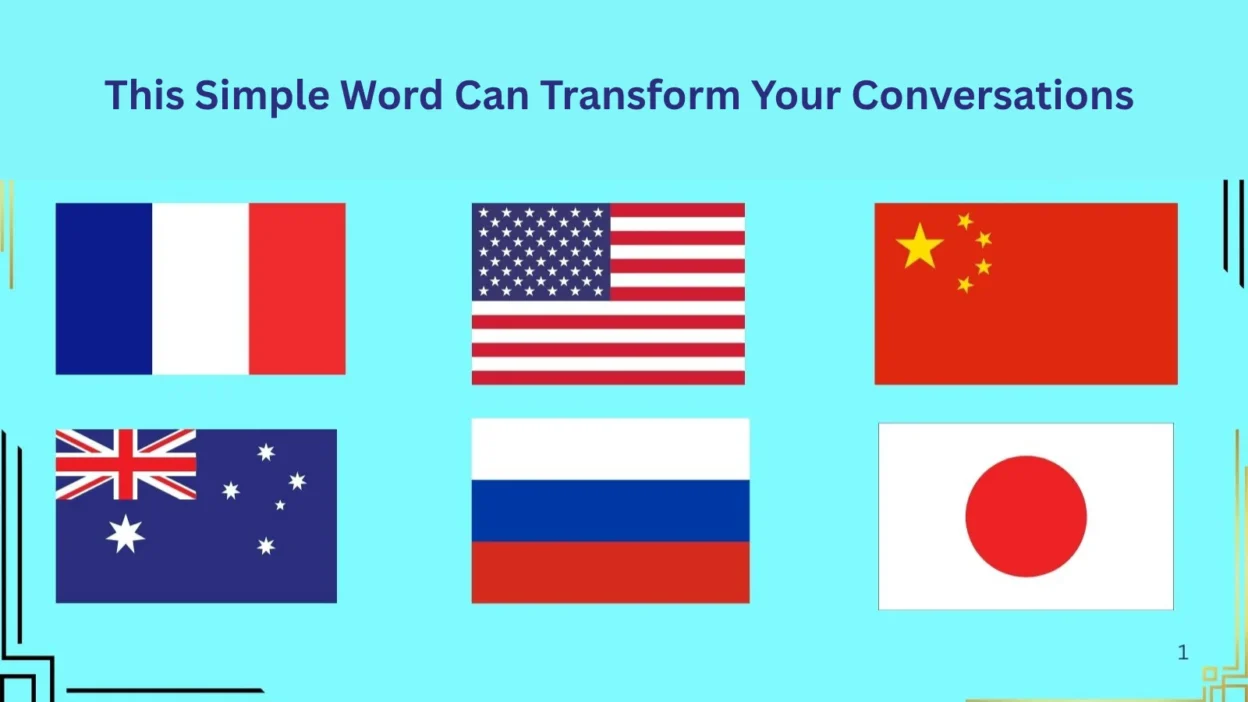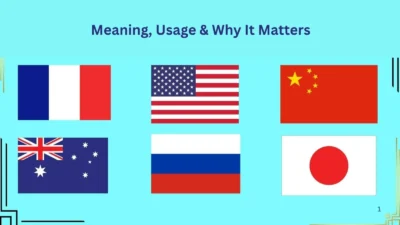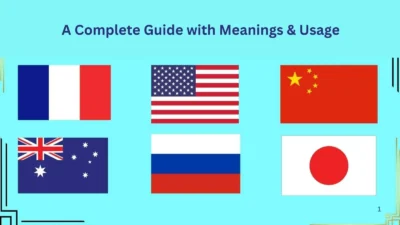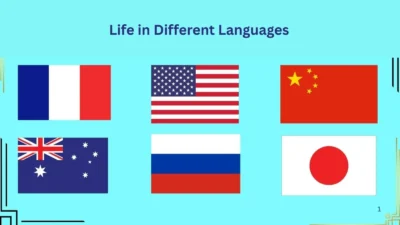- Why You’re Searching for “Hello”
You’ve probably landed here because you’re wondering:
- “What exactly does hello mean?”
- “How do I use hello in different situations?”
- “Is there a better way to greet people in English?”
Whether you’re learning English, preparing for a conversation, or simply want to sound more confident and natural—this article is your complete guide to mastering “Hello.” By the end, you’ll know exactly when, where, and how to use this word to connect with others clearly and respectfully.
What Does “Hello” Mean?
The word “hello” is a universal greeting in English used to:
- Begin a conversation
- Attract someone’s attention
- Acknowledge someone’s presence
It’s typically the first word you say when meeting or addressing someone. It sets the tone for the interaction—friendly, respectful, or even enthusiastic depending on how you say it.
Why “Hello” Matters in Communication
“Hello” might seem basic, but it plays a big role in social interaction. Here’s why it’s important:
- Opens the door to conversation
- Shows politeness and friendliness
- Bridges cultural gaps in formal or informal situations
- Builds confidence in speaking English
Different Ways to Say Hello (With Contexts)
🔹 Formal Settings
Used in business, meetings, or respectful interactions:
- Hello, how do you do?
- Good morning / Good afternoon / Good evening
- Greetings
- It’s a pleasure to meet you
🔹 Casual Settings
Used with friends or peers:
- Hey!
- Hi
- Yo
- What’s up?
- How’s it going?
🔹 Digital or Phone Conversations
Especially in emails or calls:
- Hello, this is [Your Name] speaking
- Hi there, just checking in…
- Hello [Name], hope you’re doing well
When to Use “Hello” (Practical Situations)
| Situation | Example |
|---|---|
| Meeting someone for the first time | “Hello, I’m Sarah. Nice to meet you.” |
| Answering the phone | “Hello, who’s speaking please?” |
| Greeting someone at work | “Hello John, did you receive my report?” |
| Entering a room | “Hello everyone!” |
| Chatting online | “Hello! How’s your day going?” |
Tone Matters: How You Say “Hello”
The word may stay the same, but your tone changes everything:
| Tone | Effect |
|---|---|
| Friendly | Makes the person feel welcomed |
| Energetic | Shows excitement to speak |
| Polite | Suitable for professional situations |
| Neutral | Safe choice for unknown audiences |
Common Mistakes to Avoid
- Saying “Hello” in an overly robotic or flat tone
- Using it too formally with friends (can sound distant)
- Ignoring it entirely in messages (seems cold or rude)
Hello in Other Languages 🌍
The word “hello” has many counterparts across the globe. Here are a few:
| Language | Word |
|---|---|
| Spanish | Hola |
| French | Bonjour |
| German | Hallo |
| Japanese | こんにちは (Konnichiwa) |
| Arabic | مرحبًا (Marhaban) |
| Urdu | ہیلو / سلام (Hello / Salaam) |
| Hindi | नमस्ते (Namaste) |
Quick Tips to Use “Hello” Effectively
- Smile when you say it—even on the phone.
- Match your greeting to the context (formal or casual).
- Follow up with a question or small talk to keep the conversation flowing.
- Use a person’s name if possible: “Hello, Rachel!”
(Introduction, Chart, Meta-Analysis & Conclusio
If you’re learning English, the word “hello” is one of the first and most important greetings to know. It’s used to politely start a conversation, get someone’s attention, or say hi when you meet someone. Sometimes learners wonder when to use “hello” instead of informal greetings like “hi” or “hey.” Remember, “hello” is suitable for both formal and casual situations, making it a safe choice to greet anyone politely. Mastering this word will help you make good first impressions and start conversations with confidence.
📊 Chart: “Hello” in 70+ Languages
🇪🇺 Europe
- Albanian – Përshëndetje
- Basque – Kaixo
- Belarusian – Прывітанне (Pryvitannie)
- Bosnian – Zdravo
- Bulgarian – Здравей (Zdravey)
- Catalan – Hola
- Croatian – Bok
- Czech – Ahoj (informal) / Dobrý den (formal)
- Danish – Hej / Goddag
- Dutch – Hallo / Hoi (informal)
- Estonian – Tere
- Finnish – Hei / Moi
- French – Bonjour
- Galician – Ola
- German – Hallo / Guten Tag
- Greek – Γειά σου (Yia sou)
- Hungarian – Szia
- Icelandic – Halló / Góðan dag
- Irish – Dia dhuit (formal) / Haigh (informal)
- Italian – Ciao (informal) / Salve (neutral)
- Latvian – Sveiki
- Lithuanian – Labas
- Macedonian – Здраво (Zdravo)
- Maltese – Bongu
- Norwegian – Hei / Hallo
- Polish – Cześć (informal) / Dzień dobry (formal)
- Portuguese – Olá
- Romanian – Bună / Salut
- Russian – Привет (Privet, informal) / Здравствуйте (Zdravstvuyte, formal)
- Serbian – Здраво (Zdravo)
- Slovak – Ahoj
- Slovenian – Živjo
- Spanish – Hola
- Swedish – Hej / Hallå
- Ukrainian – Привіт (Pryvit)
- Welsh – Helo / Shwmae
🌏 Asia
- Arabic – مرحبا (Marhaba) / السلام عليكم (As-salamu alaykum – religious)
- Armenian – Բարեւ (Barev)
- Azerbaijani – Salam
- Bengali – নমস্কার (Nomoshkar) / হ্যালো (Hyālō)
- Burmese – မင်္ဂလာပါ (Mingalaba)
- Chinese (Mandarin) – 你好 (Nǐ hǎo)
- Filipino (Tagalog) – Kamusta / Hello
- Georgian – გამარჯობა (Gamarjoba)
- Hindi – नमस्ते (Namaste) / हैलो (Hello)
- Indonesian – Halo / Apa kabar?
- Japanese – こんにちは (Konnichiwa)
- Kannada – ನಮಸ್ಕಾರ (Namaskāra)
- Kazakh – Сәлем (Sälem)
- Khmer – ជំរាបសួរ (Chom reap suor)
- Korean – 안녕하세요 (Annyeonghaseyo)
- Kurdish – Silav / Merheba
- Malayalam – ഹലോ (Halō) / നമസ്തേ (Namastē)
- Nepali – नमस्ते (Namaste)
- Persian (Farsi) – سلام (Salam)
- Punjabi – ਸਤ ਸ੍ਰੀ ਅਕਾਲ (Sat sri akal) / ਹੈਲੋ (Hello)
- Sinhala – හෙලෝ (Helō) / ආයුබෝවන් (Āyubōvan)
- Tamil – வணக்கம் (Vaṇakkam)
- Telugu – నమస్కారం (Namaskāram)
- Thai – สวัสดี (S̄wạs̄dī)
- Turkish – Merhaba
- Urdu – السلام علیکم (As-salamu alaykum) / ہیلو (Hello)
- Uzbek – Salom
- Vietnamese – Xin chào
🌍 Africa
- Afrikaans – Hallo / Goeie dag
- Amharic – ሰላም (Sälam)
- Hausa – Sannu
- Swahili – Hujambo / Jambo
- Yoruba – Pẹlẹ o
- Zulu – Sawubona
🌎 Indigenous & Other Languages
- Hawaiian – Aloha
- Māori – Kia ora
- Cherokee – ᎣᏏᏲ (Osiyo)
- Inuktitut – ᐊᐃᓐᖓᐃ (Ainngai)
- Sami (Northern) – Bures
🔍 Meta-Analysis
- Most Common Roots:
- Arabic influence: Salam (Arabic, Turkish, Uzbek, Kurdish).
- Sanskrit influence: Namaste (Hindi, Nepali, Bengali).
- Latin influence: Hola (Spanish), Ciao (Italian).
- Shortest Greetings:
- Hej (Danish/Swedish), Moi (Finnish), Salom (Uzbek).
- Longest Greetings:
- Zdravstvuyte (Russian), Chom reap suor (Khmer).
- Unique Cultural Meanings:
- Aloha (Hawaiian): Means love, peace, and hello/goodbye.
- Sawubona (Zulu): Literally “I see you” (acknowledging presence).
- Mingalaba (Burmese): A blessing (“auspiciousness to you”).
🎯 Conclusion
Greetings are more than words—they reflect history, religion, and social norms. Some (like As-salamu alaykum) carry spiritual weight, while others (like Ciao) are casual. European greetings often derive from Latin, while Asian ones frequently include respect (e.g., Annyeonghaseyo).



